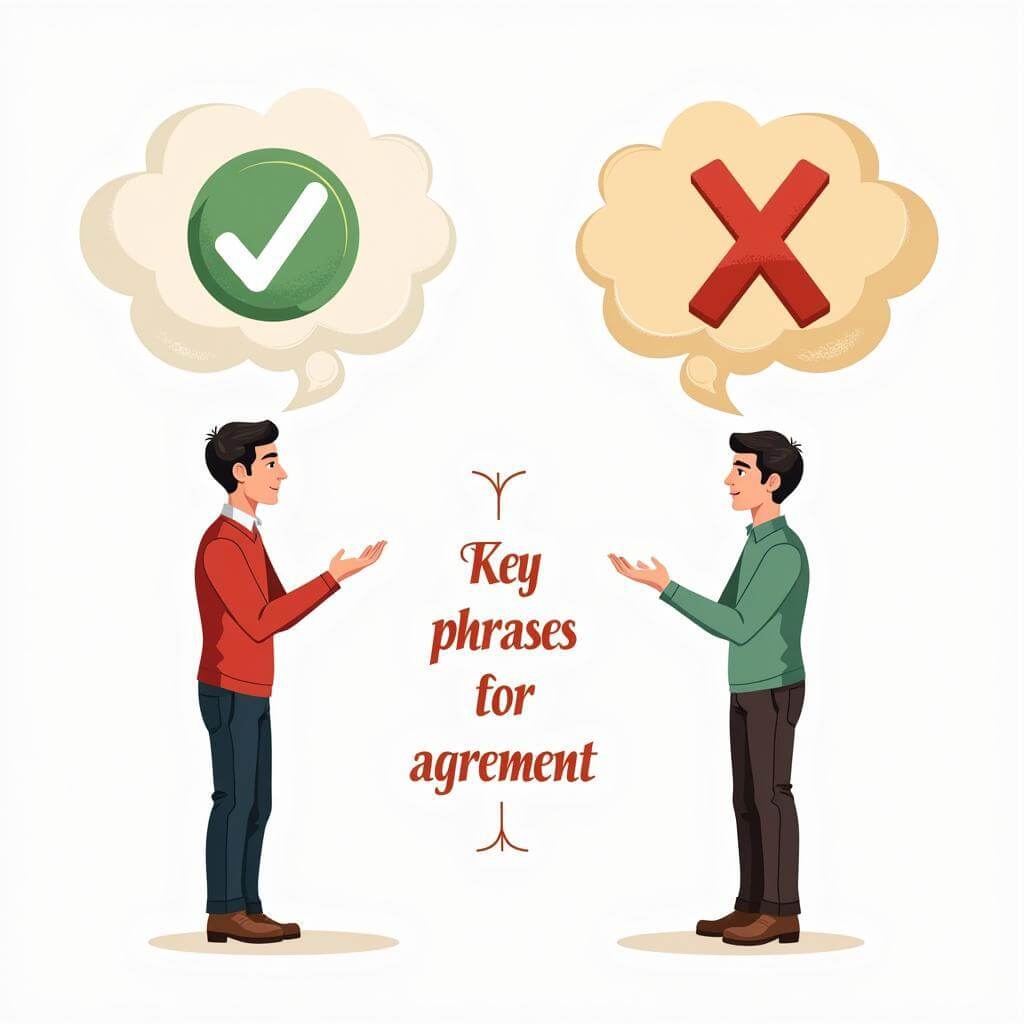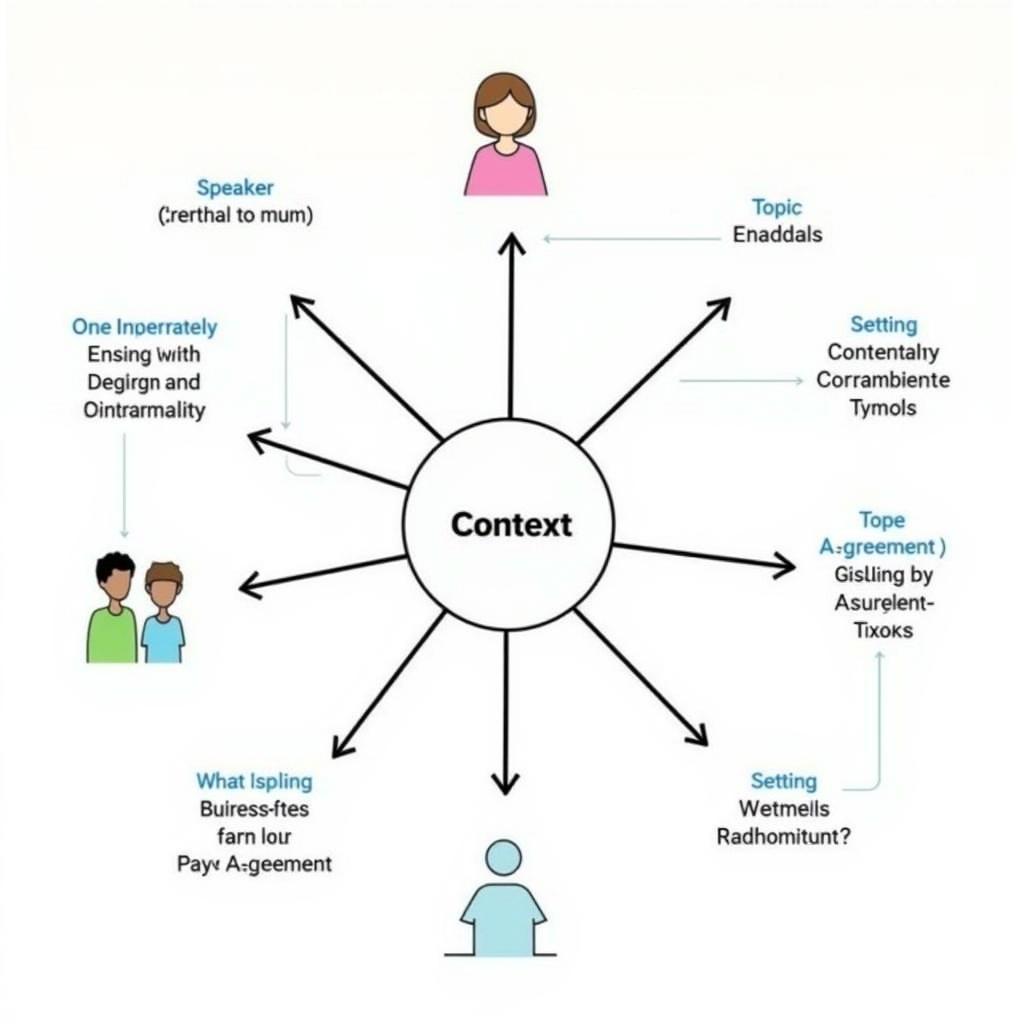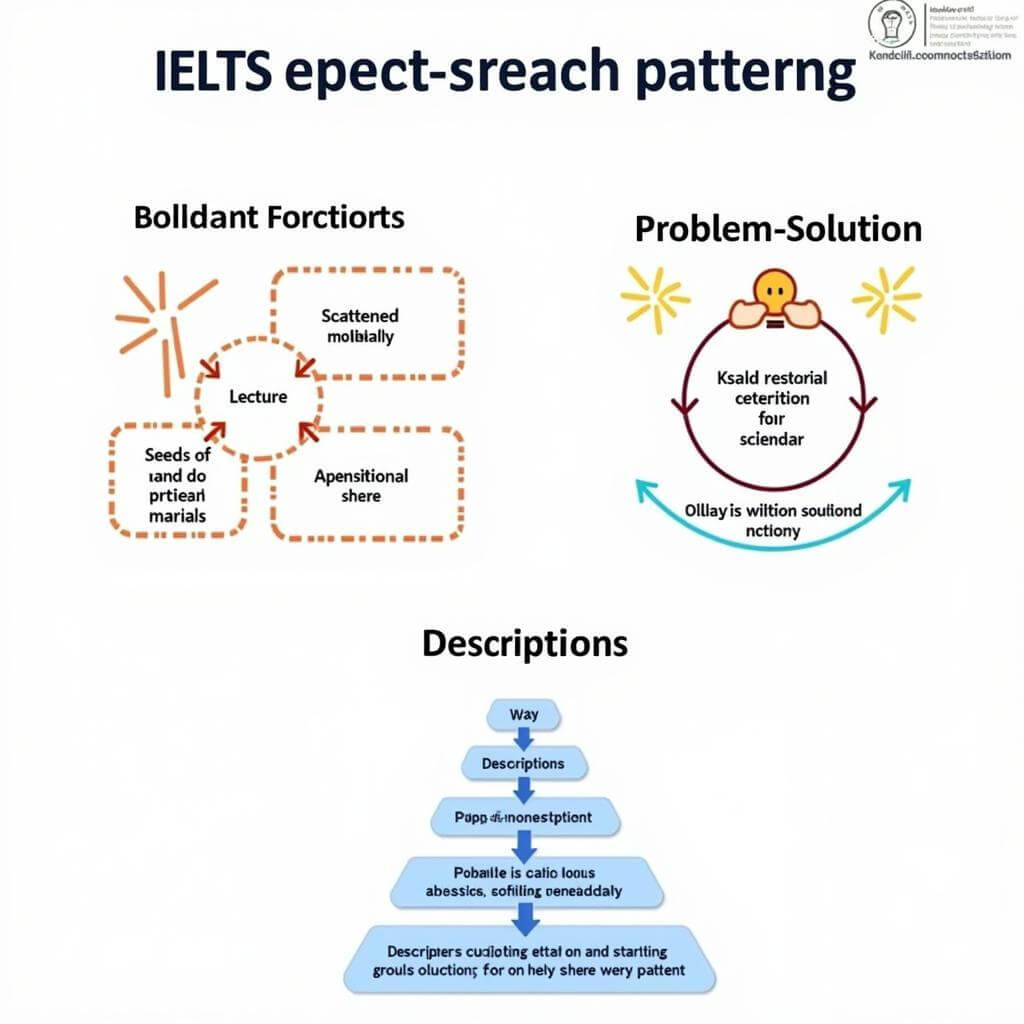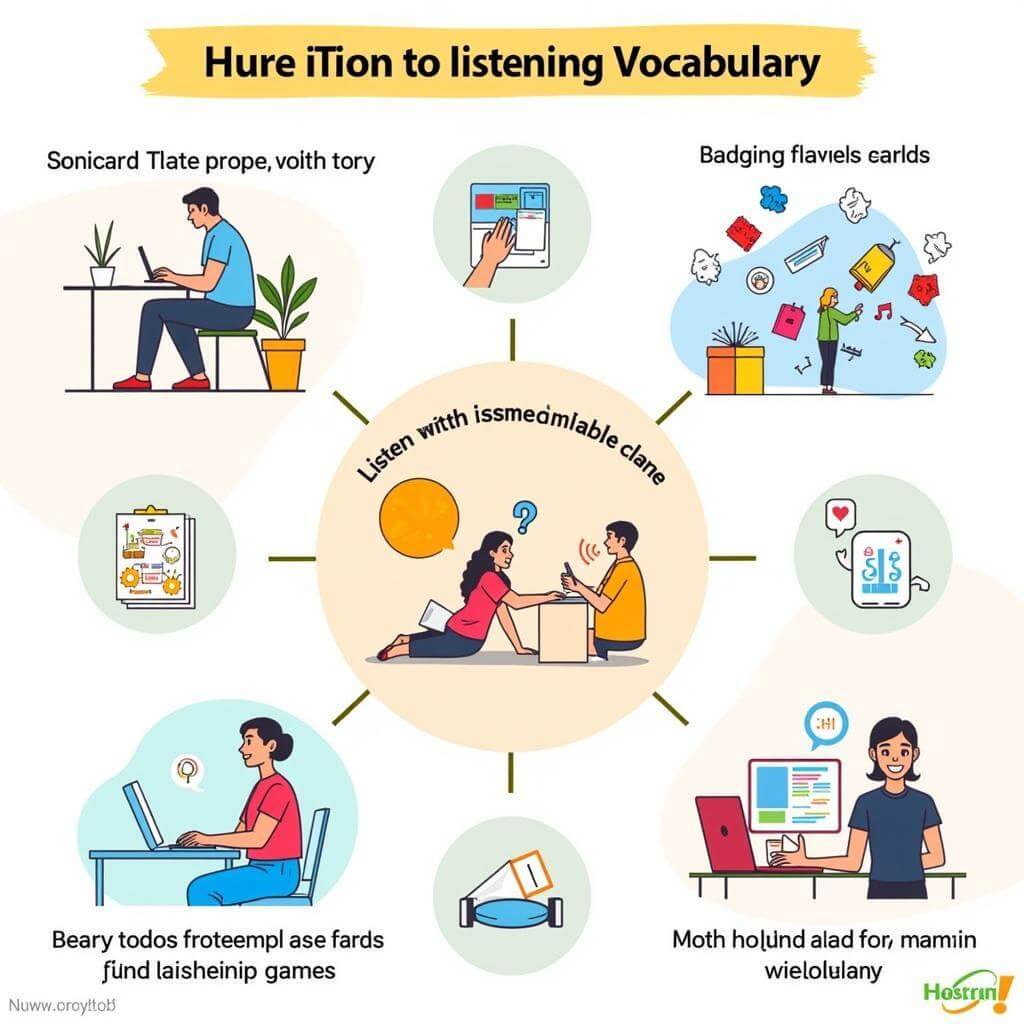IELTS listening can be a challenging component of the exam, particularly when it comes to discerning agreement and disagreement between speakers. As an experienced IELTS instructor, I’ve helped countless students improve their listening skills, especially in this crucial area. In this comprehensive guide, we’ll explore effective strategies for listening for agreement or disagreement in IELTS, ensuring you’re well-prepared for test day.
Nội dung bài viết
- Understanding the Importance of Agreement and Disagreement in IELTS Listening
- Why Listening for Agreement or Disagreement Matters
- Key Strategies for Identifying Agreement and Disagreement
- 1. Listen for Explicit Agreement/Disagreement Words
- 2. Recognize Tone and Intonation
- 3. Look for Partial Agreement
- 4. Pay Attention to Follow-up Statements
- 5. Understand Contextual Clues
- Advanced Techniques for Listening for Agreement or Disagreement
- 1. Focus on Hedging Language
- 2. Identify Subtle Agreement Signals
- 3. Recognize Rhetorical Questions
- 4. Analyze Discourse Markers
- 5. Practice Active Listening
- Common Pitfalls to Avoid
- Practical Exercises to Improve Your Skills
- Expert Tips from IELTS Instructor Sarah Thompson
- Conclusion
- Frequently Asked Questions
- How can I improve my ability to detect sarcasm or irony in IELTS listening?
- Are there cultural differences in expressing agreement or disagreement that I should be aware of?
- How can I practice listening for agreement or disagreement if I don’t have a study partner?
- What should I do if I’m unsure whether speakers are agreeing or disagreeing?
- How important is it to understand idiomatic expressions when listening for agreement or disagreement?
- Can managing focus during noisy audio help in identifying agreement or disagreement?
- How does identifying speaker bias in audio relate to recognizing agreement or disagreement?
Understanding the Importance of Agreement and Disagreement in IELTS Listening
Recognizing agreement and disagreement is a fundamental skill in IELTS listening. It’s not just about hearing words; it’s about understanding the nuances of conversation and the speakers’ intentions. This skill is particularly crucial in sections 3 and 4 of the listening test, where academic discussions and lectures often feature multiple speakers expressing varying viewpoints.
 IELTS Listening for Agreement and Disagreement
IELTS Listening for Agreement and Disagreement
Why Listening for Agreement or Disagreement Matters
- Accurately answering questions
- Understanding speaker relationships
- Identifying main ideas and supporting details
- Improving overall comprehension
Key Strategies for Identifying Agreement and Disagreement
To excel in listening for agreement or disagreement, you need to develop a keen ear for specific linguistic cues and tonal variations. Here are some expert-approved strategies to help you master this skill:
1. Listen for Explicit Agreement/Disagreement Words
Pay close attention to words and phrases that directly indicate agreement or disagreement:
- Agreement: “I agree,” “You’re right,” “Exactly,” “That’s true”
- Disagreement: “I disagree,” “I’m not sure about that,” “On the contrary,” “That’s not entirely correct”
2. Recognize Tone and Intonation
Speakers often convey agreement or disagreement through their tone of voice. Practice identifying:
- Enthusiastic agreement: Rising intonation, positive tone
- Reluctant agreement: Flat intonation, hesitant tone
- Strong disagreement: Sharp or emphatic tone
- Polite disagreement: Softened tone, often with hedging language
3. Look for Partial Agreement
Sometimes, speakers may partially agree before expressing a different viewpoint. Listen for phrases like:
- “I see your point, but…”
- “That’s true to some extent, however…”
- “I agree with you on X, but when it comes to Y…”
4. Pay Attention to Follow-up Statements
After an initial agreement or disagreement, speakers often provide additional information. This can help confirm their stance:
- Agreement: Elaboration or examples supporting the previous speaker’s point
- Disagreement: Counterarguments or alternative perspectives
5. Understand Contextual Clues
The context of the conversation can provide valuable hints about agreement or disagreement. Consider:
- The overall topic and purpose of the discussion
- Previous statements made by the speakers
- The relationship between the speakers (e.g., student-teacher, colleagues)
 Contextual Clues in IELTS Listening
Contextual Clues in IELTS Listening
Advanced Techniques for Listening for Agreement or Disagreement
As you progress in your IELTS preparation, incorporate these advanced techniques to further refine your listening skills:
1. Focus on Hedging Language
Speakers often use hedging language to soften disagreement or express uncertainty. Be alert to phrases like:
- “I’m not entirely sure, but…”
- “It might be the case that…”
- “Perhaps we should consider…”
2. Identify Subtle Agreement Signals
Sometimes agreement is expressed subtly. Listen for:
- Echoing or rephrasing the previous speaker’s words
- Using collaborative language like “we” or “let’s”
- Non-verbal sounds of agreement (in video-based questions)
3. Recognize Rhetorical Questions
Speakers may use rhetorical questions to express disagreement indirectly:
- “Is that really the best approach?”
- “Have you considered the implications of that?”
4. Analyze Discourse Markers
Pay attention to discourse markers that can signal a shift in opinion or perspective:
- “On the other hand…”
- “Conversely…”
- “In contrast…”
5. Practice Active Listening
Engage in active listening by:
- Predicting possible agreements or disagreements based on the context
- Mentally summarizing each speaker’s stance
- Focusing on speaker intent rather than just individual words
Common Pitfalls to Avoid
When listening for agreement or disagreement, be wary of these common mistakes:
- Assuming agreement based on polite language
- Misinterpreting passionate delivery as disagreement
- Overlooking subtle disagreement cues
- Focusing too much on individual words rather than overall meaning
- Failing to consider cultural differences in expressing agreement/disagreement
Practical Exercises to Improve Your Skills
To enhance your ability in listening for agreement or disagreement, try these exercises:
- Listen to academic debates and identify points of agreement and disagreement
- Practice with IELTS listening samples, focusing specifically on agreement/disagreement questions
- Engage in discussions with peers and consciously note agreement and disagreement patterns
- Practice listening to conversations with multiple speakers to improve your ability to track different viewpoints
Expert Tips from IELTS Instructor Sarah Thompson
As a seasoned IELTS instructor with over 15 years of experience, Sarah Thompson shares her top tips:
“One of the most effective strategies I teach my students is to create a mental ‘agreement-disagreement spectrum’ while listening. Place each speaker’s comments on this spectrum as you hear them. This visual approach helps you track the conversation’s flow and identify shifts in opinion more easily.”
“Remember, agreement and disagreement aren’t always black and white. Train your ear to pick up on the shades of gray – the partial agreements, the polite disagreements, and the subtle shifts in perspective. These nuances are often where the key information lies in IELTS listening tasks.”
Conclusion
Mastering the skill of listening for agreement or disagreement is crucial for success in the IELTS listening test. By implementing the strategies and techniques outlined in this guide, you’ll be well-equipped to navigate the complexities of academic discussions and lectures. Remember to practice regularly, stay attuned to both explicit and implicit cues, and approach each listening task with an active, engaged mindset. With dedication and the right approach, you’ll see significant improvements in your ability to discern agreement and disagreement, ultimately boosting your IELTS listening score.
Frequently Asked Questions
How can I improve my ability to detect sarcasm or irony in IELTS listening?
To detect sarcasm or irony, focus on the speaker’s tone and the context of the conversation. Look for discrepancies between the words used and the way they’re said. Practice with English-language comedy shows or podcasts to familiarize yourself with these subtle forms of communication.
Are there cultural differences in expressing agreement or disagreement that I should be aware of?
Yes, cultural differences can affect how agreement or disagreement is expressed. Some cultures may be more direct, while others prefer indirect communication. IELTS generally uses neutral language, but being aware of these differences can help you interpret subtle cues more accurately.
How can I practice listening for agreement or disagreement if I don’t have a study partner?
You can practice alone by listening to podcasts, TED Talks, or online debates. Pay attention to how speakers express their opinions and interact with each other. You can also use IELTS practice materials and focus specifically on questions related to agreement and disagreement.
What should I do if I’m unsure whether speakers are agreeing or disagreeing?
If you’re unsure, consider the overall context and listen for follow-up statements that might clarify the speakers’ positions. In the IELTS test, if you’re still uncertain, make an educated guess based on the information you have. Don’t leave any questions unanswered.
How important is it to understand idiomatic expressions when listening for agreement or disagreement?
Understanding idiomatic expressions can be helpful, as they’re sometimes used to express agreement or disagreement indirectly. However, IELTS generally uses standard English. Focus on common phrases and expressions used in academic and professional contexts.
Can managing focus during noisy audio help in identifying agreement or disagreement?
Absolutely. Improving your ability to focus, especially in challenging audio conditions, can help you pick up on subtle cues of agreement or disagreement. Practice listening in various environments to sharpen this skill.
How does identifying speaker bias in audio relate to recognizing agreement or disagreement?
Identifying speaker bias can provide valuable context for understanding agreement or disagreement. A speaker’s bias may influence how they express agreement or disagreement, and recognizing this can help you interpret their statements more accurately.


